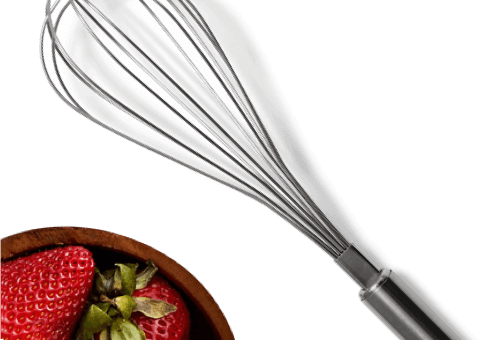Lemon zest is the secret to bright, citrusy flavor in everything from baked goods to salad dressings. I’ll show you how to zest a lemon (no fancy tools required!), plus how to store it and use it like a pro.
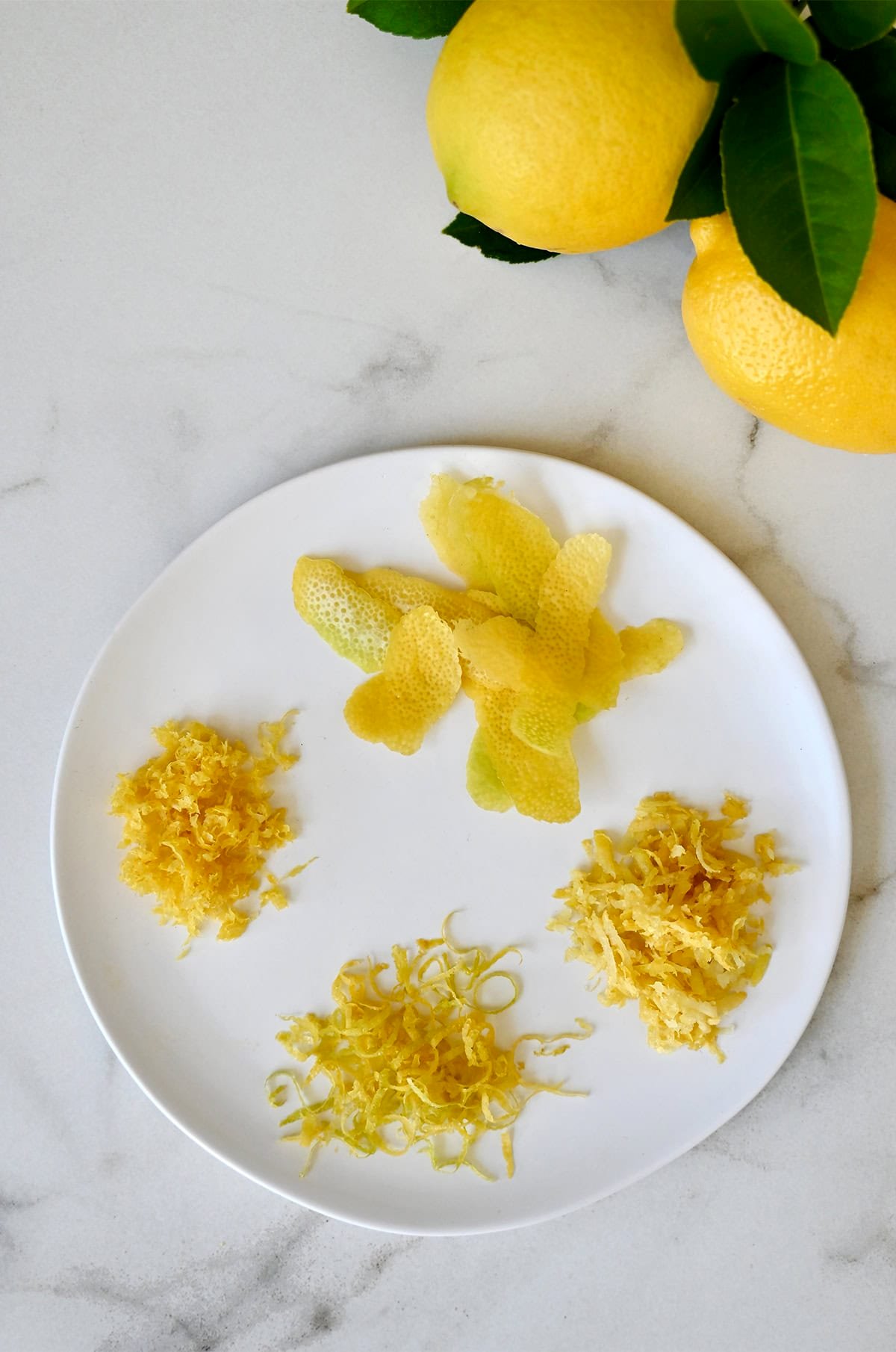
Zesting a lemon might sound like something only fancy chefs or food show contestants are expected to do. But here’s the zesty truth: this simple technique can make your home cooking pop with bright citrus flavor—whether you’re baking cheesecake bars, shaking up a lemon drop martini or just want to add a little sunshine to your salad dressing (looking at you, lemon vinaigrette!).
What Is Lemon Zest (and Why Should I Care?)
So, what exactly is lemon zest? It’s the colorful outer layer of the peel (a.k.a. the rind), where all those fragrant oils live. It’s not the white layer underneath, that’s the pith, which is bitter and will give your baked goods an unpleasant taste.
When a recipe calls for the zest of a lemon, it’s not just being extra. Zest brings concentrated lemon flavor that bottled juice just can’t replicate. You’ll find lemon zest popping up in all kinds of dishes, from sweet to savory. I use it all the time in recipes like glazed lemon loaf, lemon chicken soup and garlic herb cream cheese—yes, even recipes that don’t scream “lemon” benefit from a subtle zest boost!
The best part? Once you know how to zest a lemon (spoiler alert: there’s more than one way!), you can use the same technique to zest other citrus fruits too—like oranges, limes or grapefruits (hello, orange zest in bran muffins!). Or citrus zest stirred into softened honey butter for the dreamiest buttermilk biscuit topper. Let’s get zesting!
Tools You Can Use to Zest a Lemon
There’s more than one way to zest a lemon—and the best part? You don’t need any fancy gadgets to do it. Just make sure to wash and dry your lemon first. You don’t want any wax or grime sneaking into your baked goods! Here are four tools you can use:
1. Microplane
If you’re only going to invest in one citrus tool, make it this one. A microplane is essentially a fine-toothed grater that turns zest into delicate, fluffy shreds—perfect for mixing into batters, doughs or dressings. It’s hands-down the easiest and most efficient tool for zesting citrus.
- Hold the microplane at an angle over a bowl or cutting board.
- Grate the lemon across the blades using light pressure.
- Rotate the lemon as you go, remembering to only remove the yellow outer layer.
- Tap the microplane to release any zest clinging to the underside.
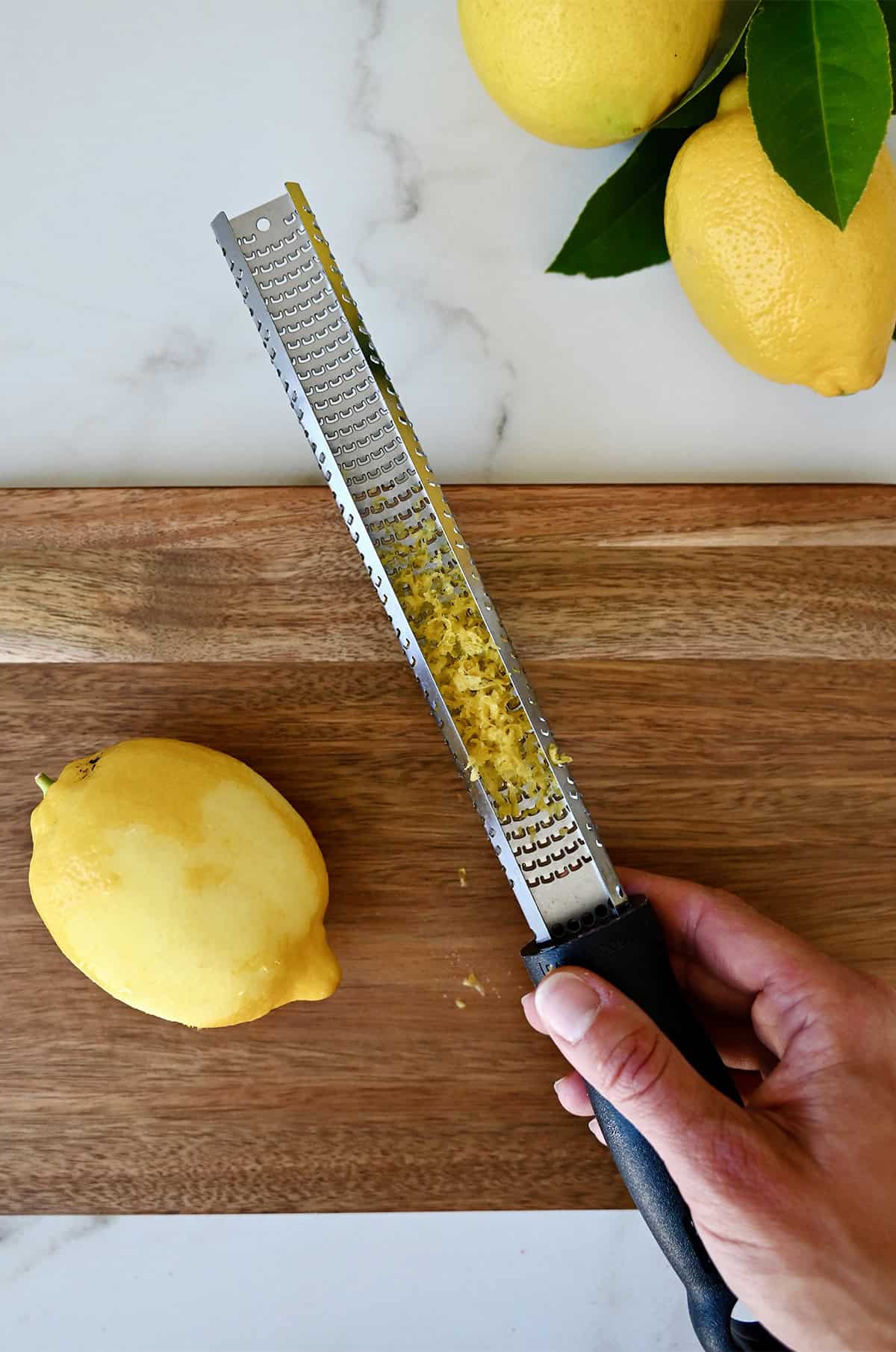
2. Box Grater
No microplane? No problem. Use the smallest holes on your box grater. You won’t get zest quite as fine as with a microplane, but it’ll still pack a flavorful punch. Bonus: Most box graters are dishwasher safe and already sitting in your kitchen.
- Hold the grater steady on a cutting board.
- Rub the lemon against the fine holes, turning it frequently.
- Be careful not to grate into the pith.
- Use your fingers or a spoon to collect the zest from the surface.
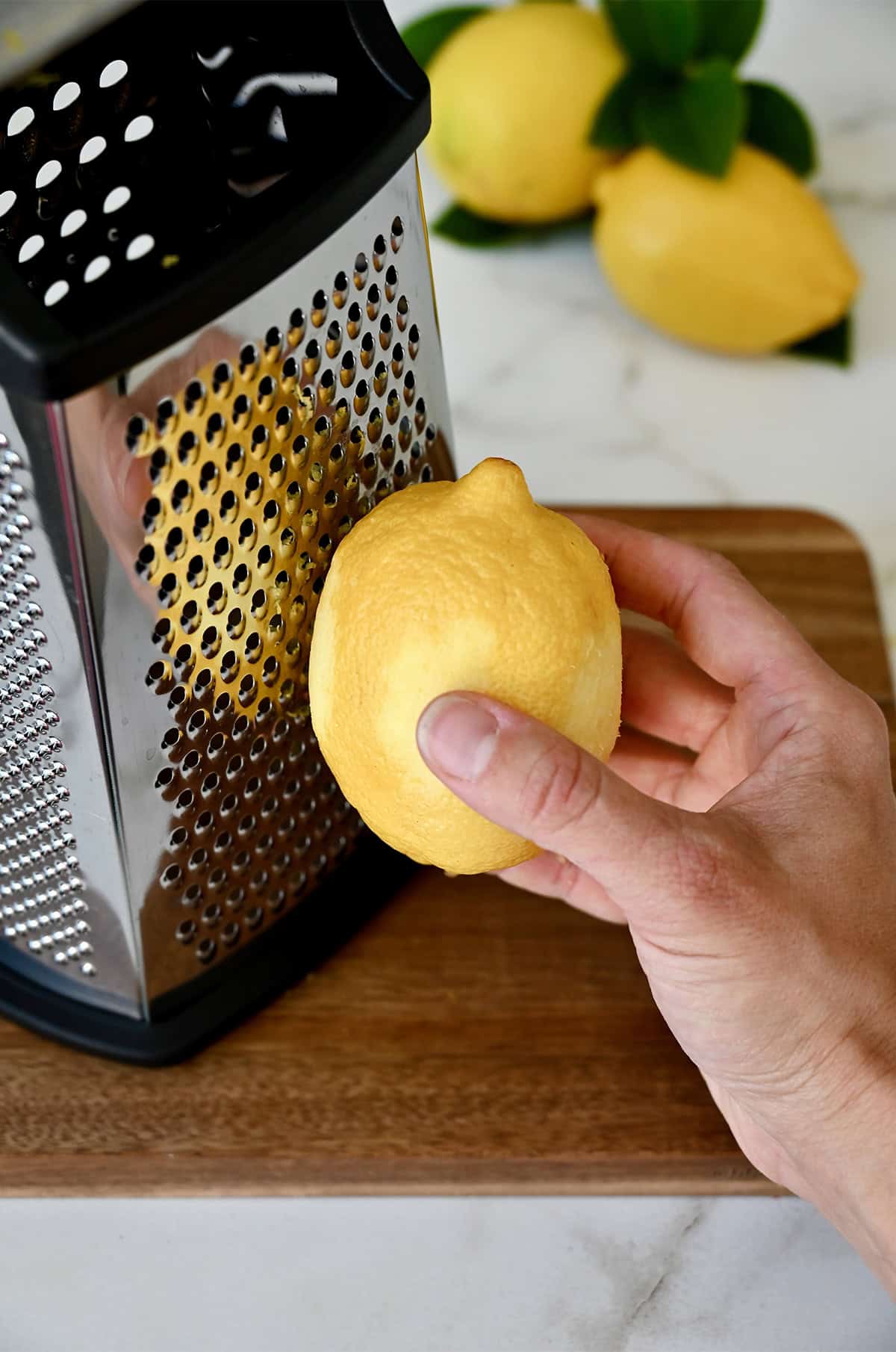
3. Citrus Zester
This classic tool has tiny circular blades that scrape off long, thin strips of zest—think cocktail garnishes or curly bits of lemon on top of cupcakes. It’s not ideal for baking (since the pieces are larger), but it’s great for when you want your lemon peel to look as good as it tastes.
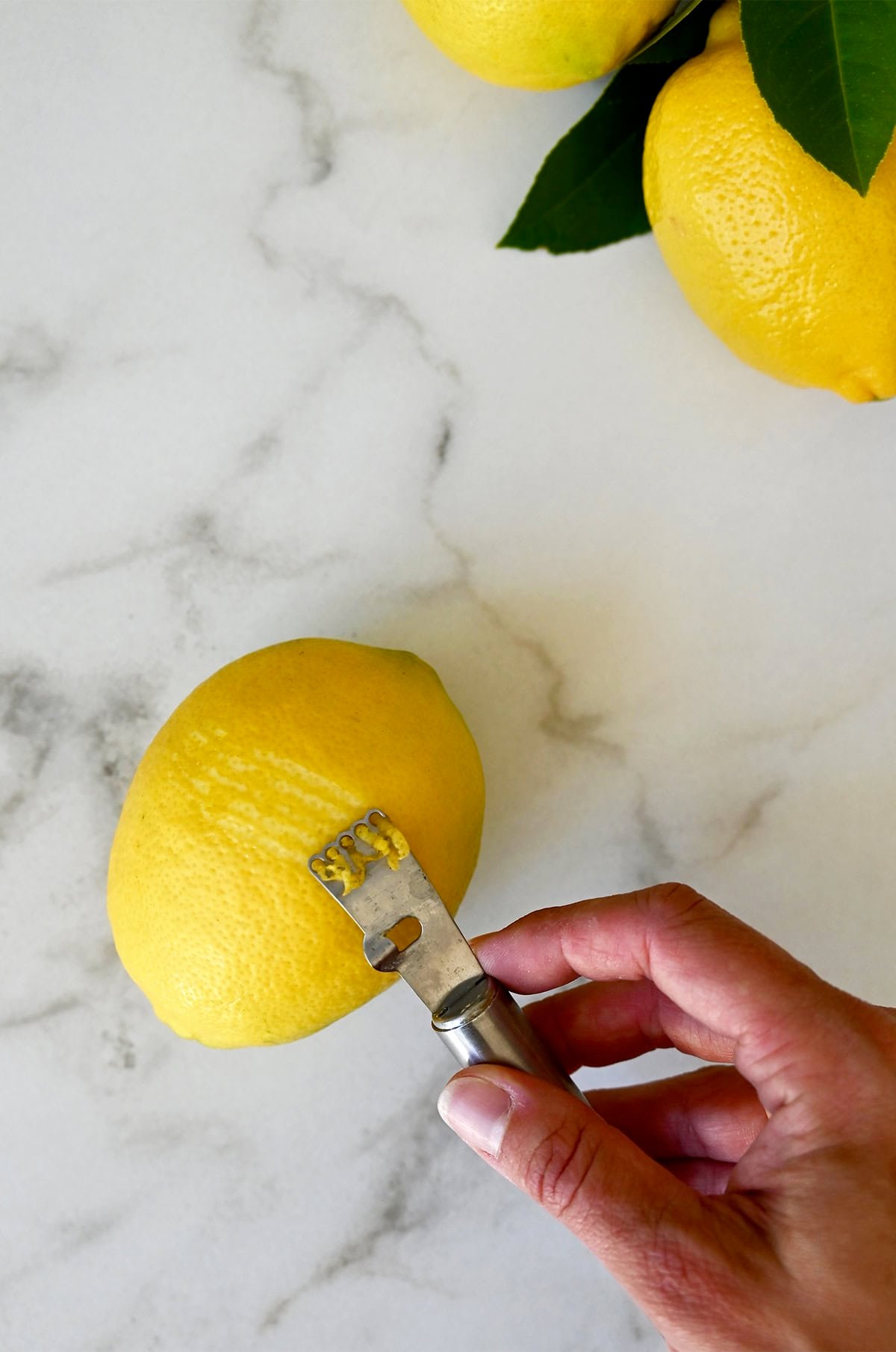
4. Vegetable Peeler
Lastly, a vegetable peeler is how to zest a lemon without a zester or a grater. Carefully slice off the strips of the peel. Then, grab your paring knife and mince the strips into small pieces. This method works great when you want zest for infusing marinades or garnishing drinks.
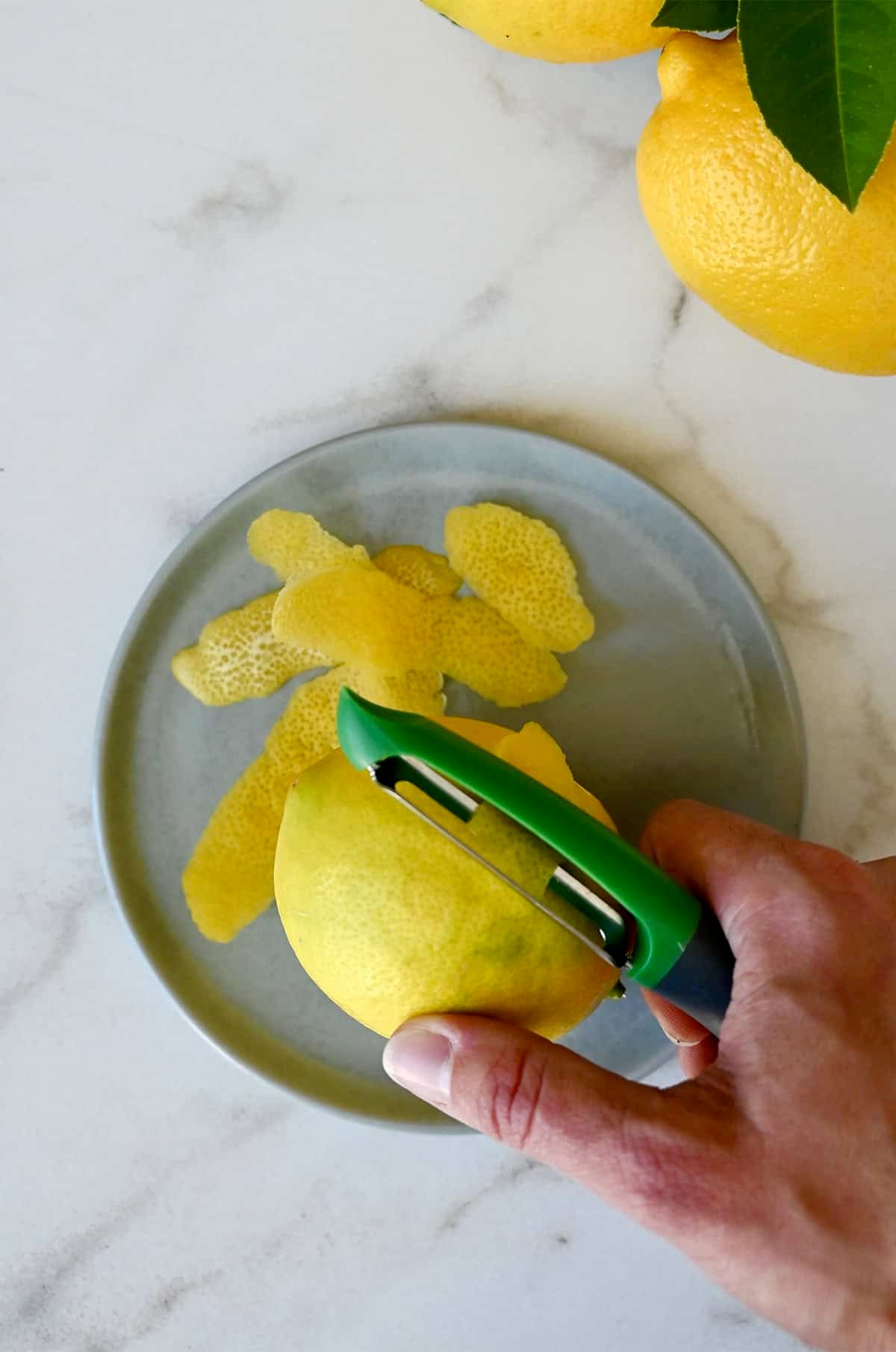
Pro Tip: Always zest before you juice. It’s way easier to zest a firm lemon than a squishy one you’ve already squeezed.
How Much Zest Is in One Lemon?
On average, you’ll get about 1 tablespoon of zest from a medium lemon. If a recipe calls for “the zest of one lemon,” that’s your magic number.
Storage Tips
Did you know that you can store lemon zest for later? Don’t let all that citrusy goodness go to waste—here’s how to keep that bright flavor fresh:
- Refrigerator: Store zest in an airtight container for up to 3 days. I like using a small glass jar or tightly sealed zip-top bag.
- Freezer: For longer storage, freeze lemon zest in a zip-top bag (squeeze out all the air!) or in an ice cube tray with a little water or lemon juice. It’ll keep for up to 3 months.
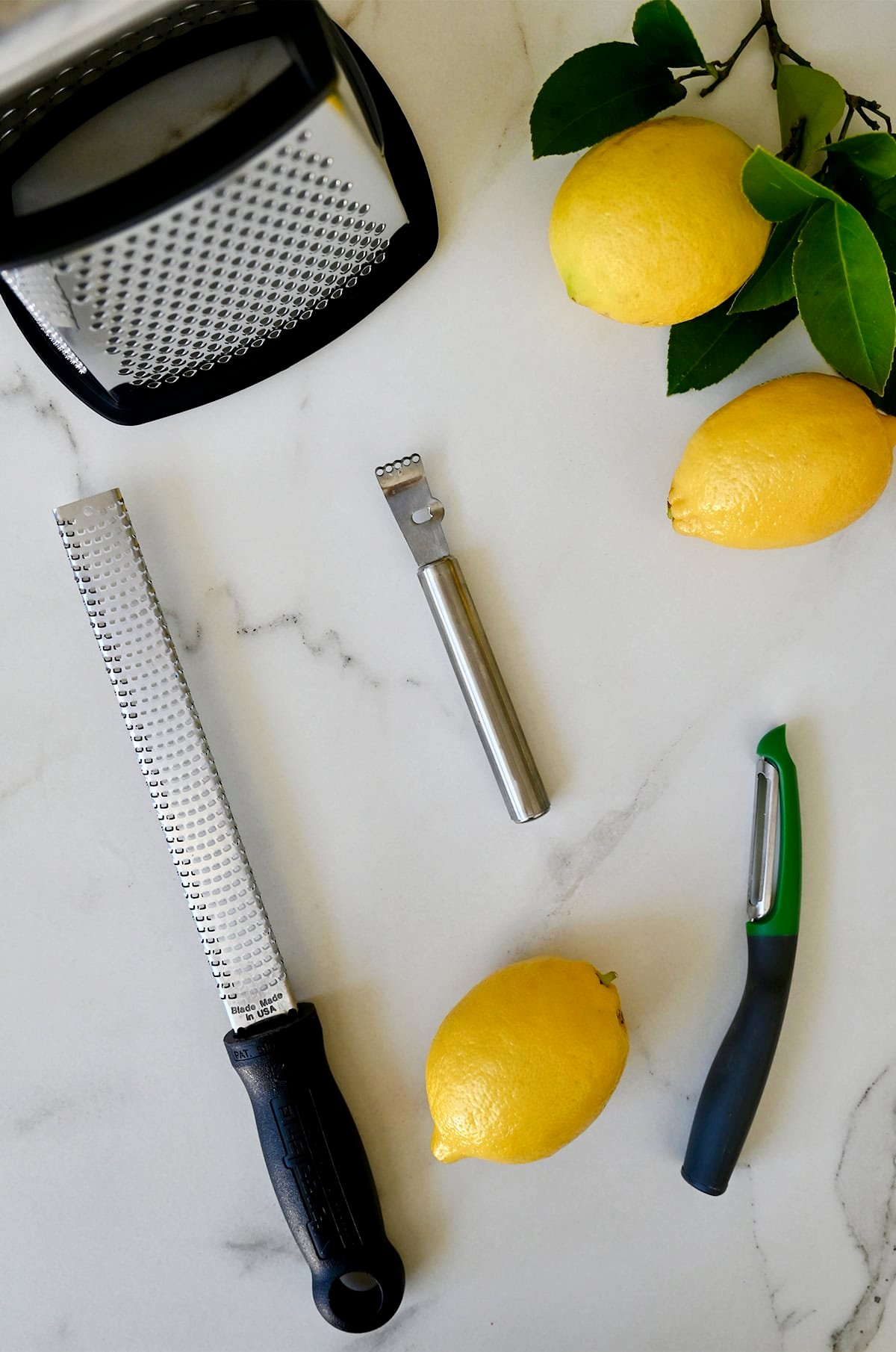
Ways to Use Lemon Zest
Now that you’re a lemon zesting pro, here are a few of my favorite recipes that put that zingy, citrus flavor to good use:

Ingredients
- 1 lemon (washed and dried)
Instructions
- Microplane: Hold the lemon in one hand and the microplane in the other. Gently drag the lemon across the grater, rotating as you go, until the yellow layer is removed. Avoid the white pith.
- Box Grater: Use the fine grate side (usually the one for hard cheeses). Lightly grate just the yellow outer peel.
- Vegetable Peeler: Peel off thin strips of the lemon rind, then finely mince the strips with a sharp knife.
- Citrus Zester: Press the circular blades into the skin of the lemon. Drag down in even strokes to create thin ribbons of lemon rind. Use immediately as a garnish, or mince the strips for use in recipes.
Kelly’s Notes
- To store: Refrigerate in an airtight container for up to 3 days.
- To freeze: Freeze for up to 3 months in a zip-top bag or ice cube tray with a little water or juice.
-
★ Did you make this recipe? Don’t forget to give it a star rating below!
Nutrition
Shoutout
Did you try this recipe?
Share it with the world! Mention @justataste or tag #justatasterecipes!
This post may contain affiliate links.

